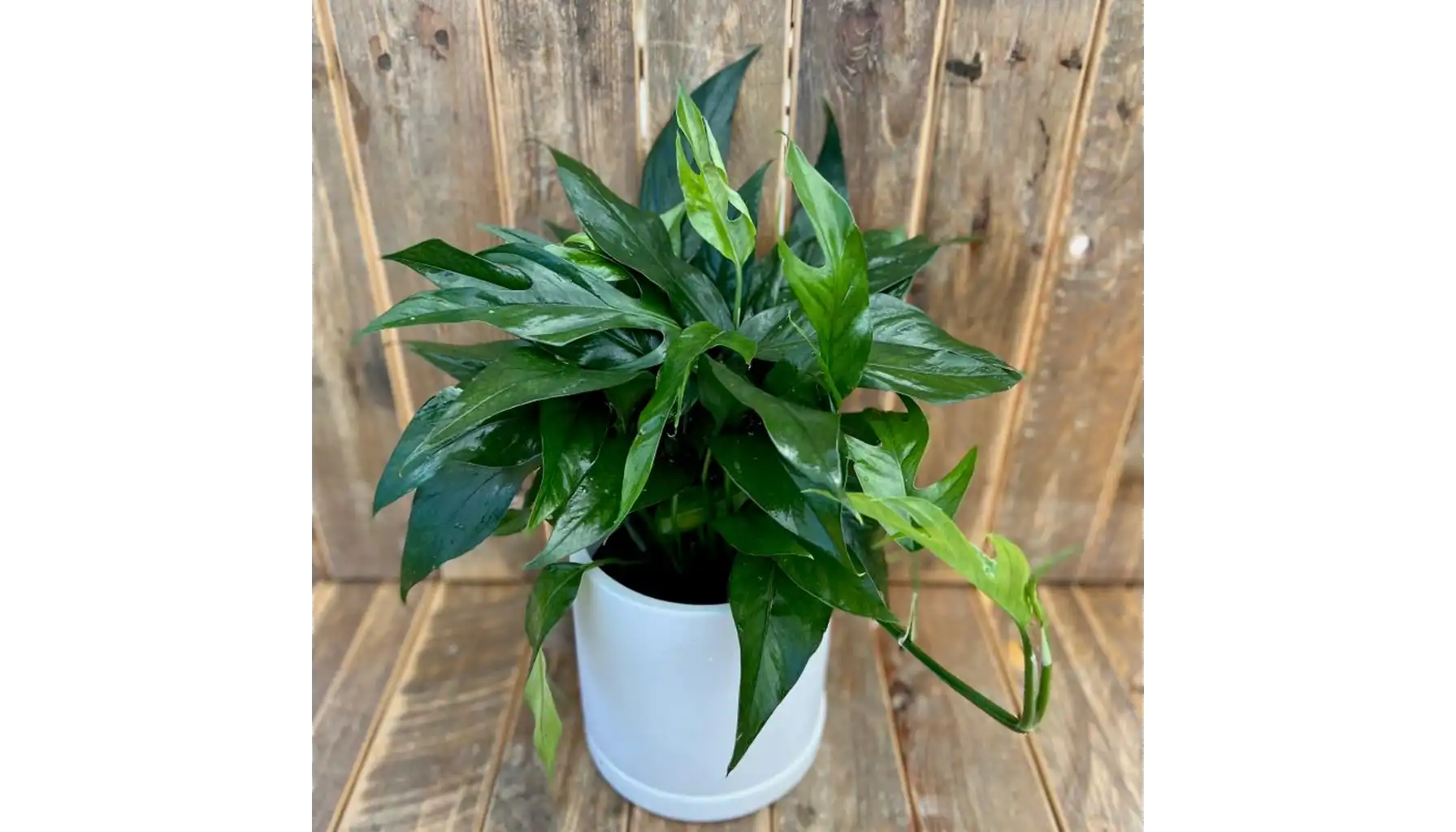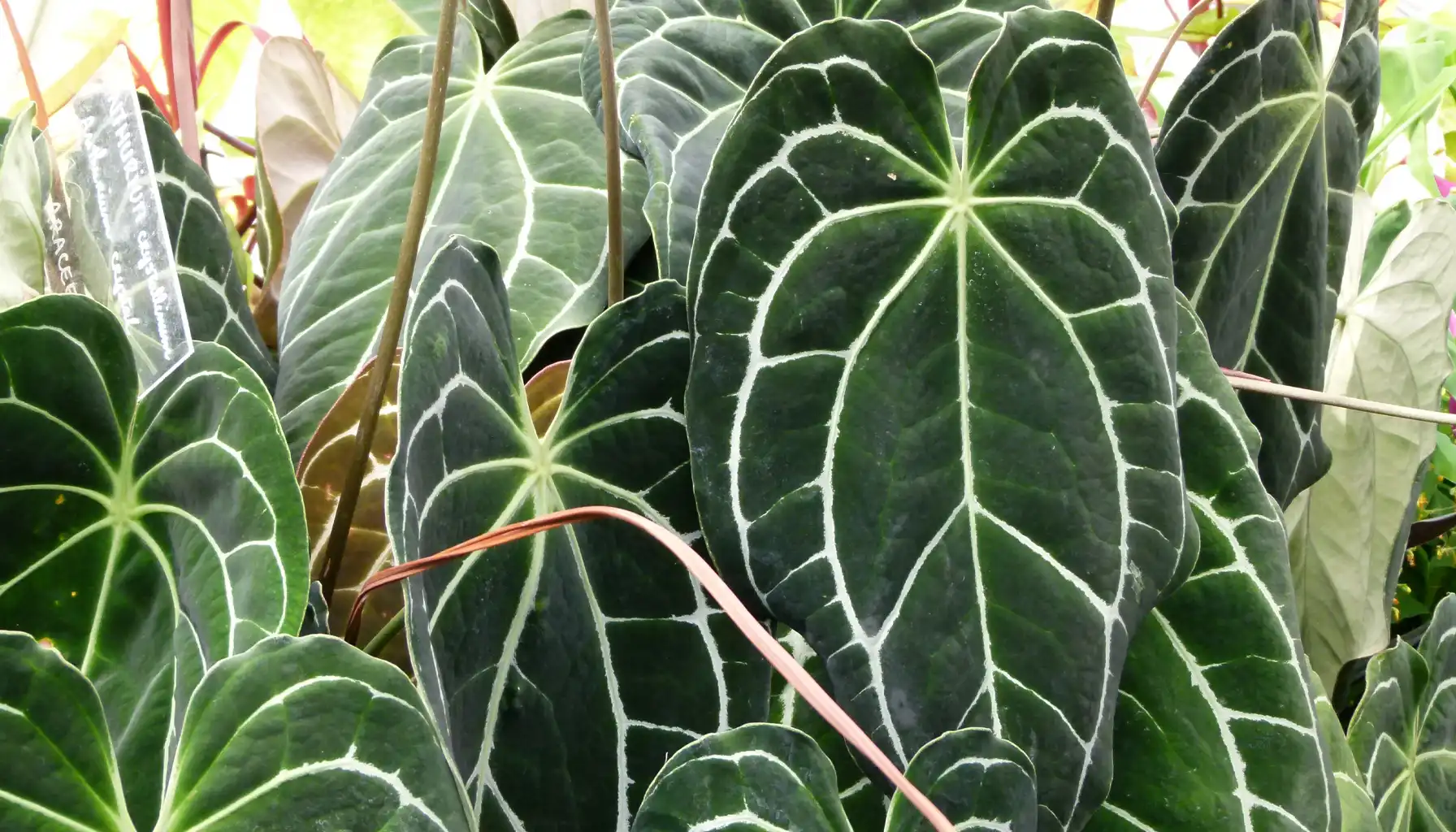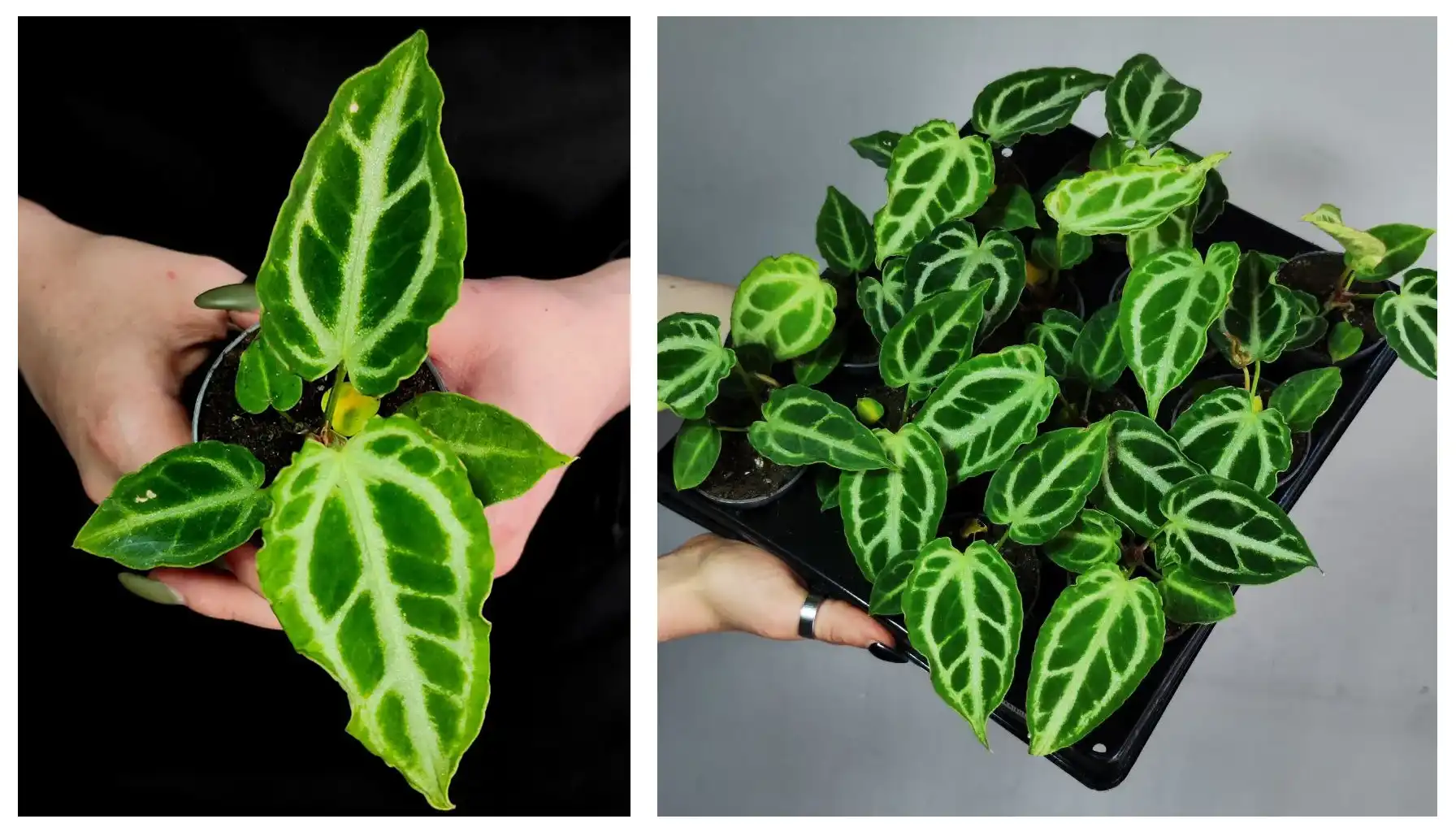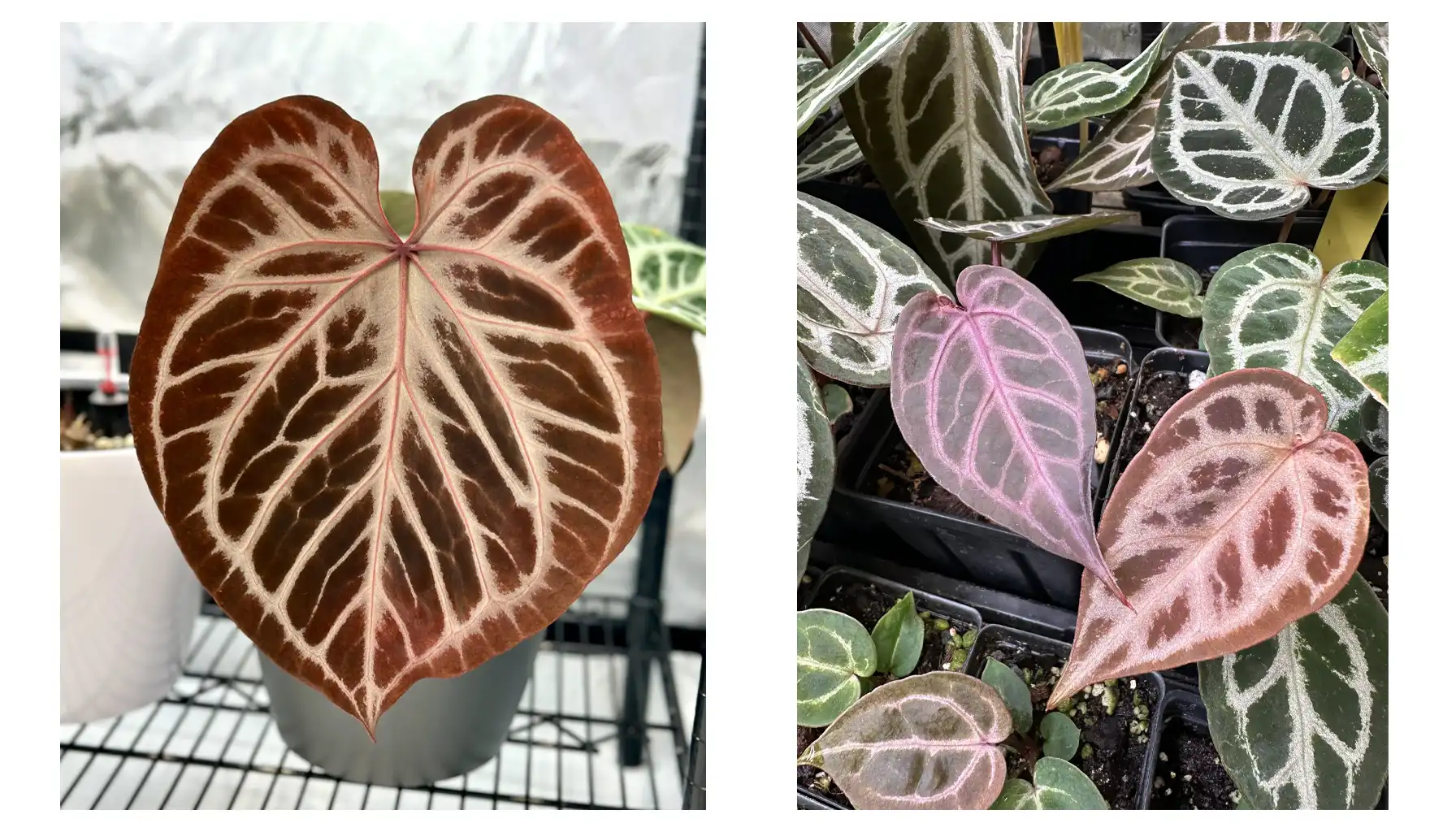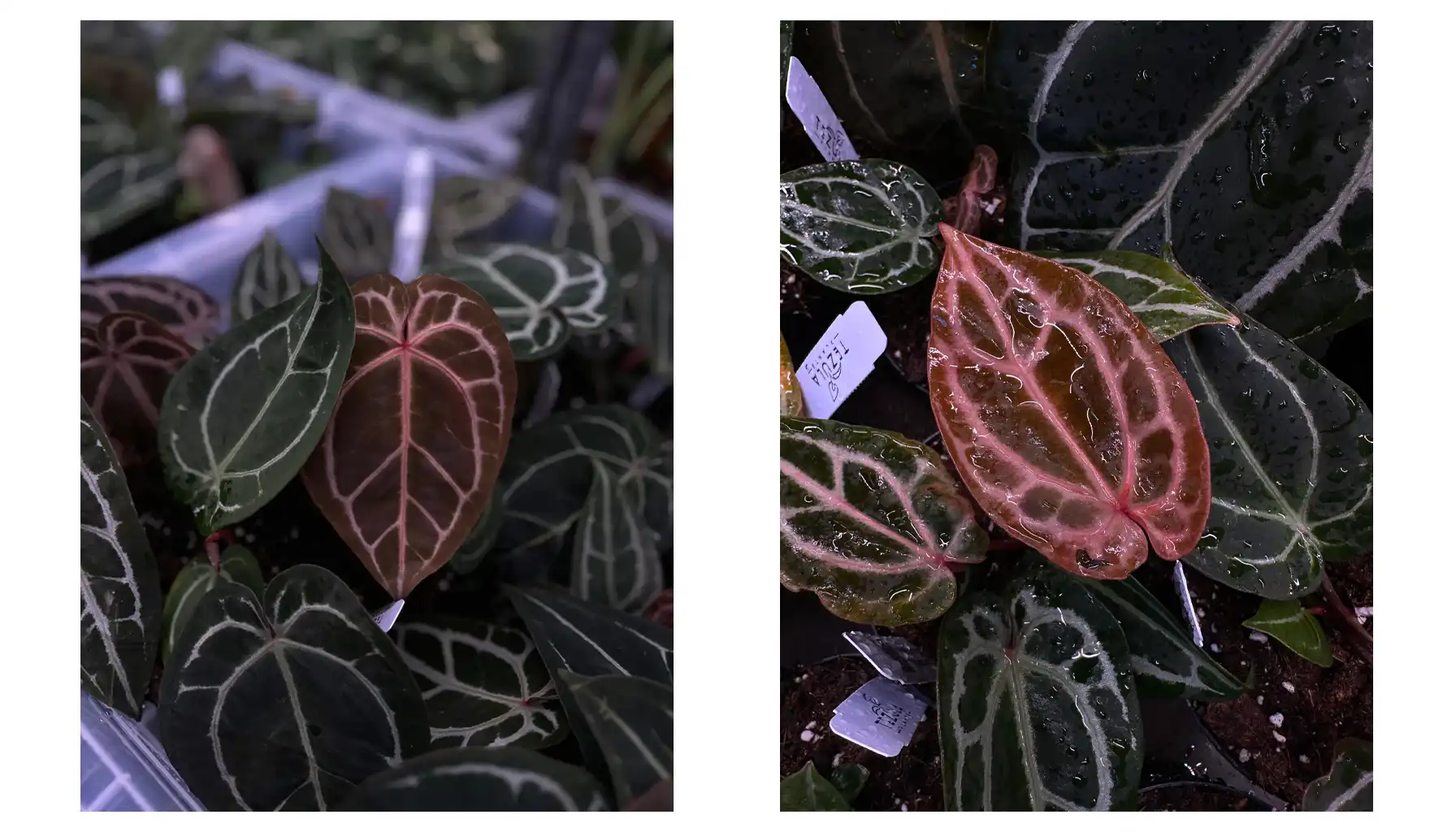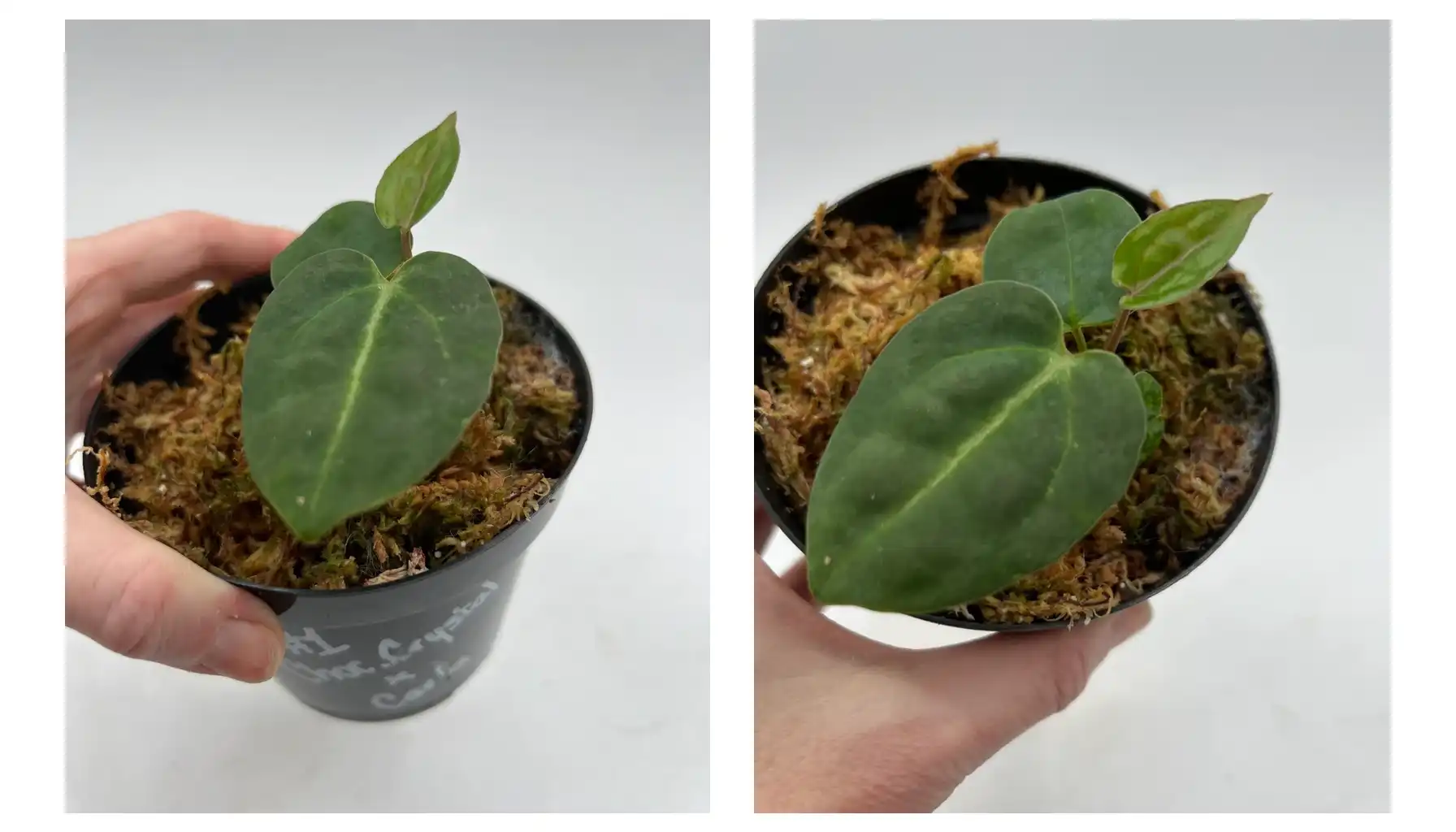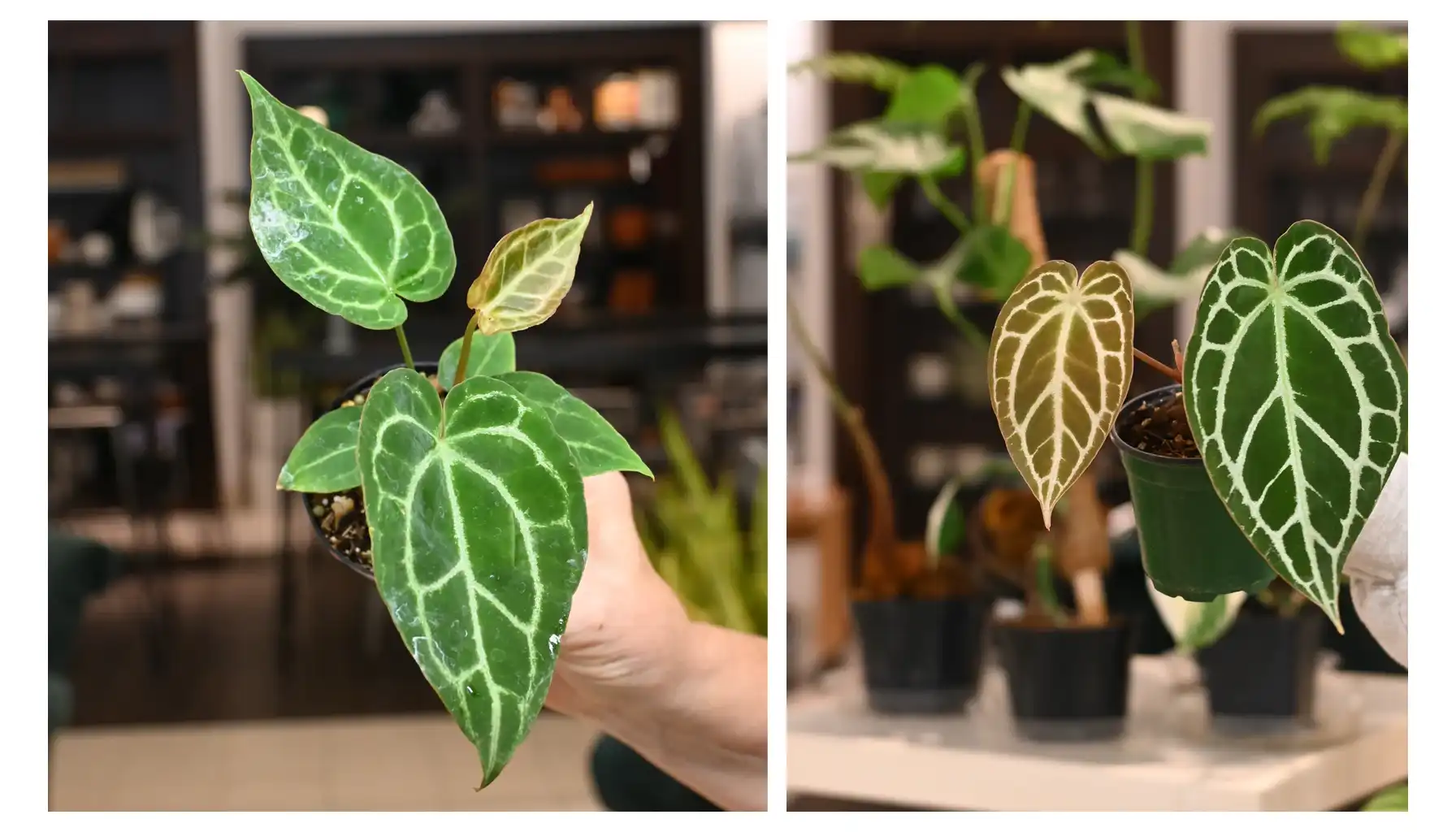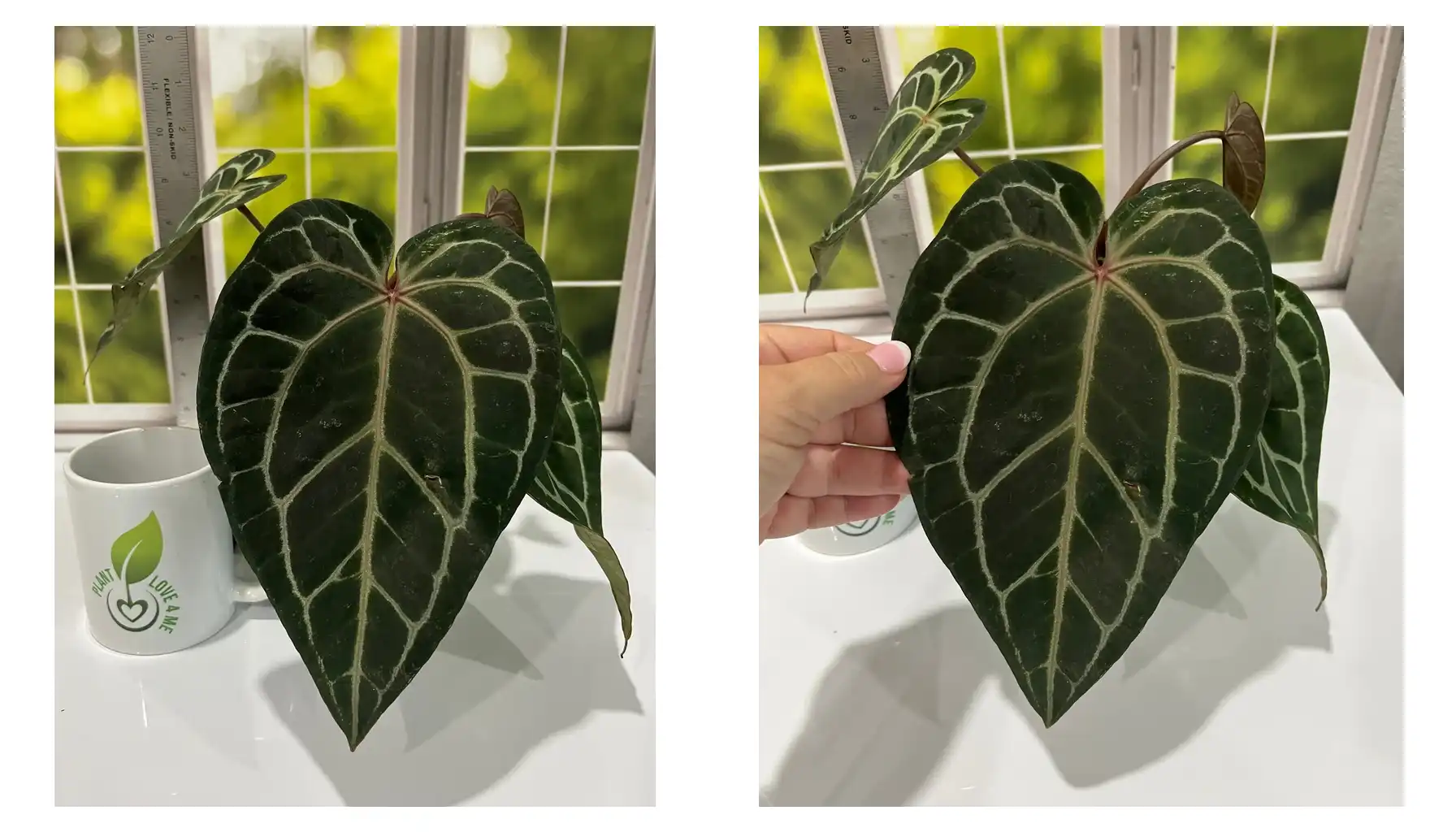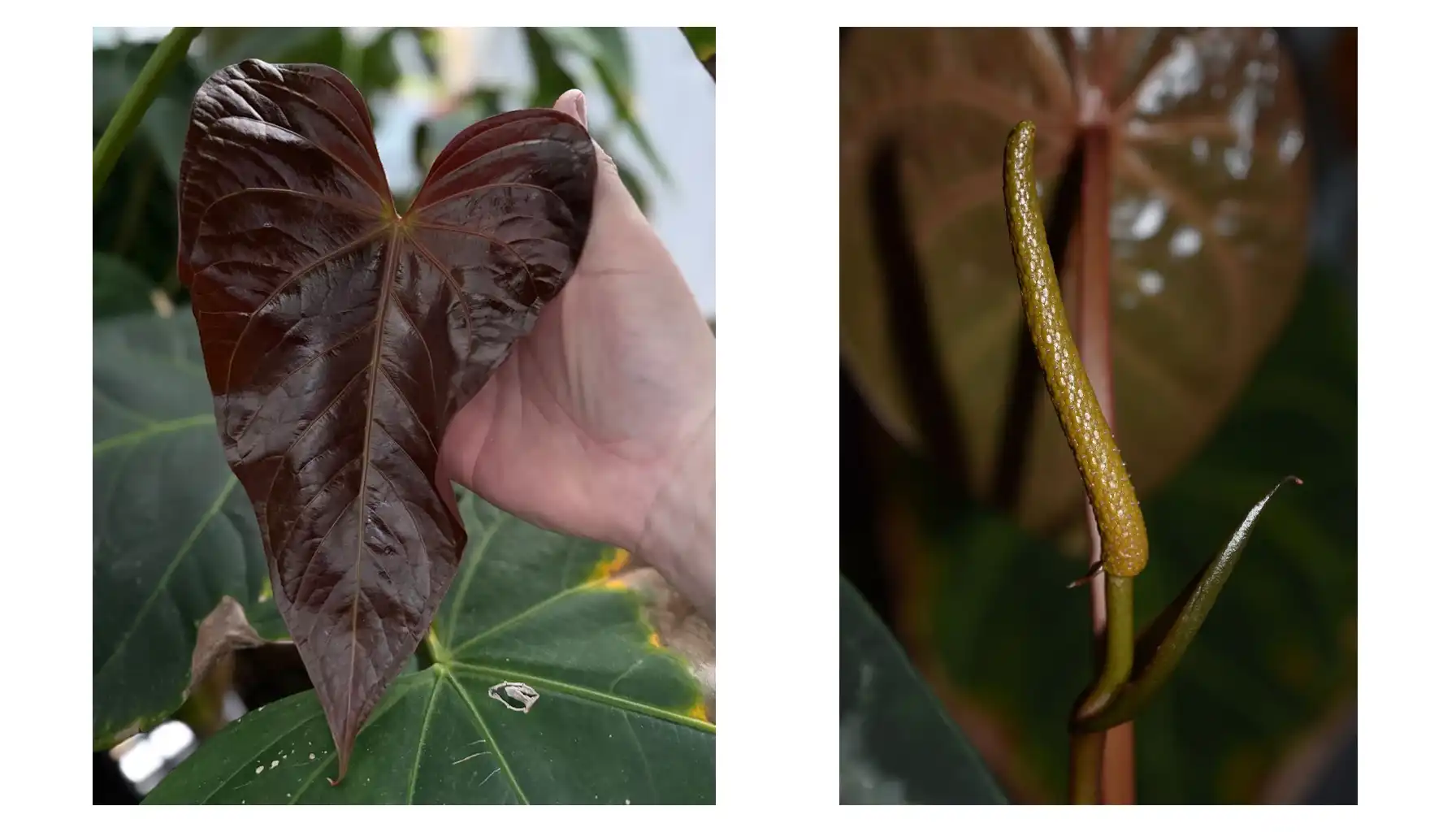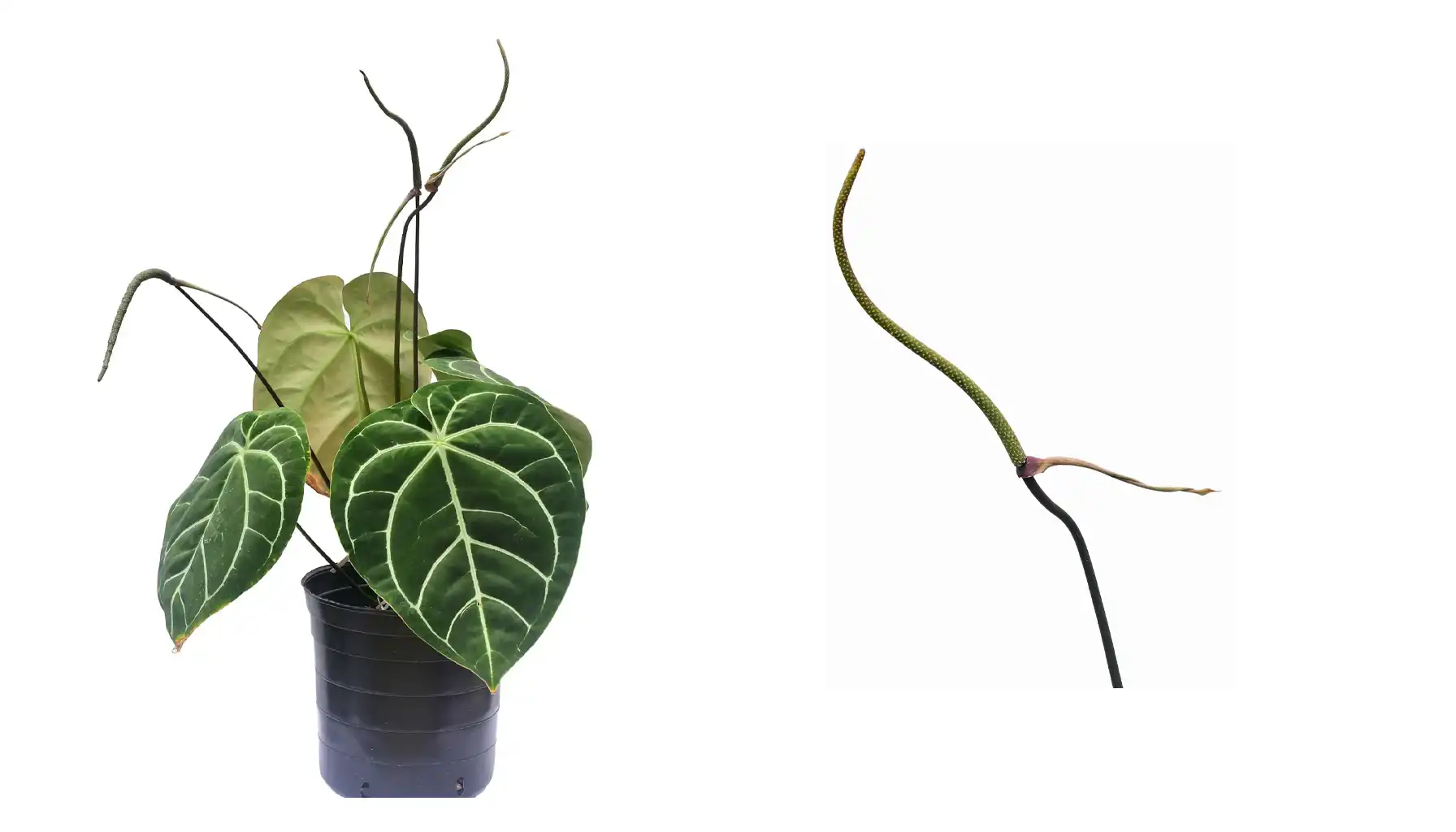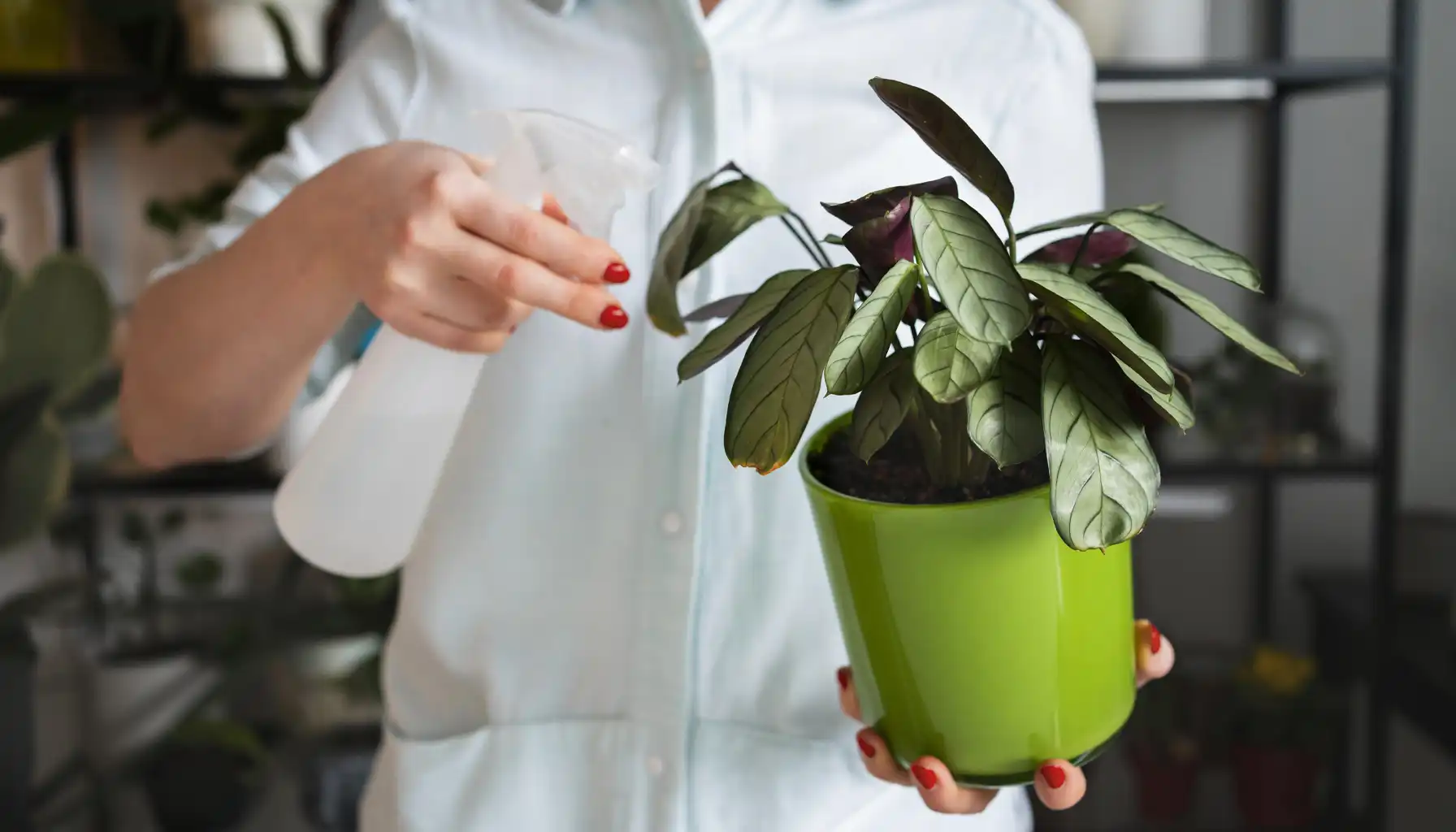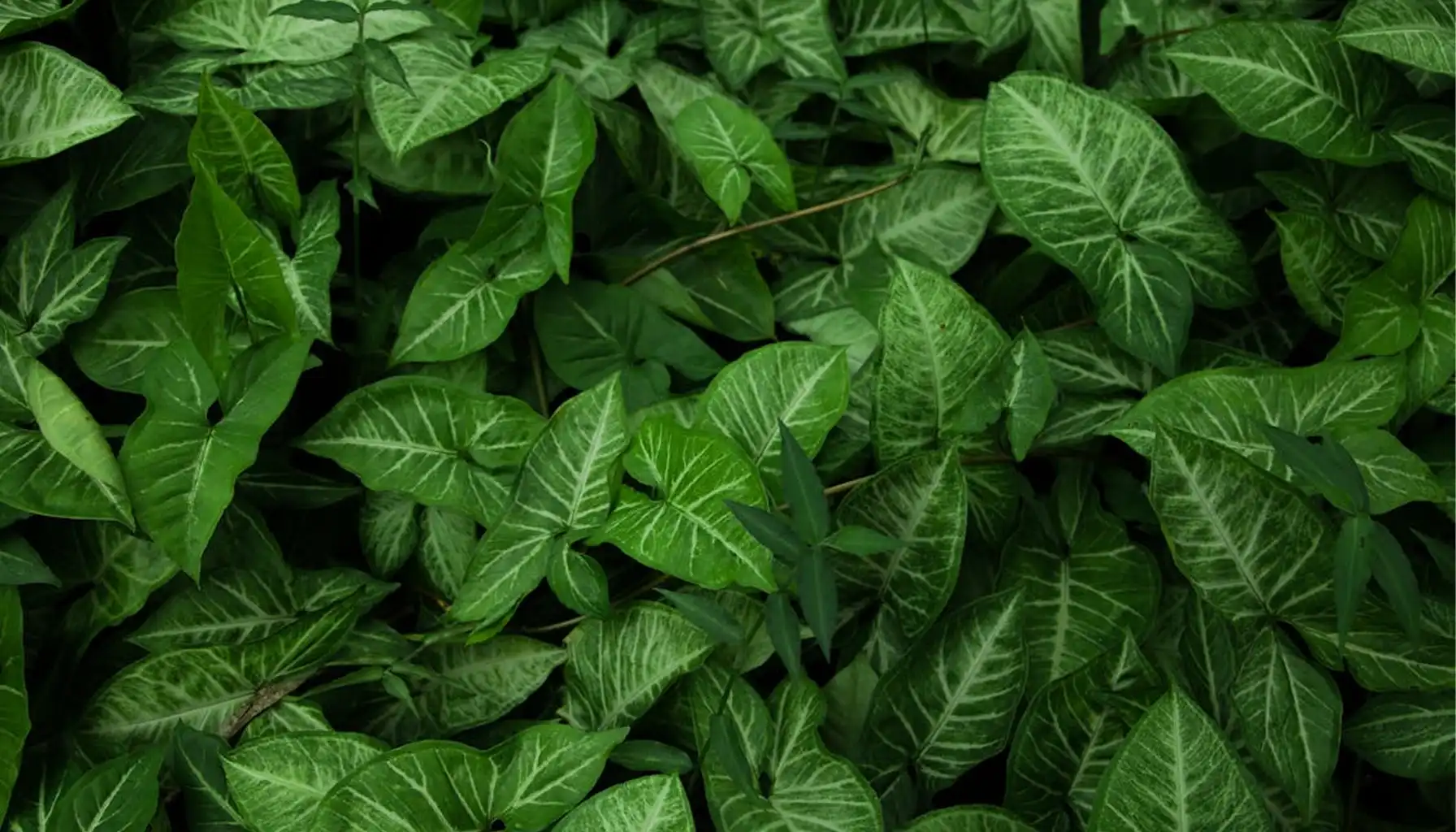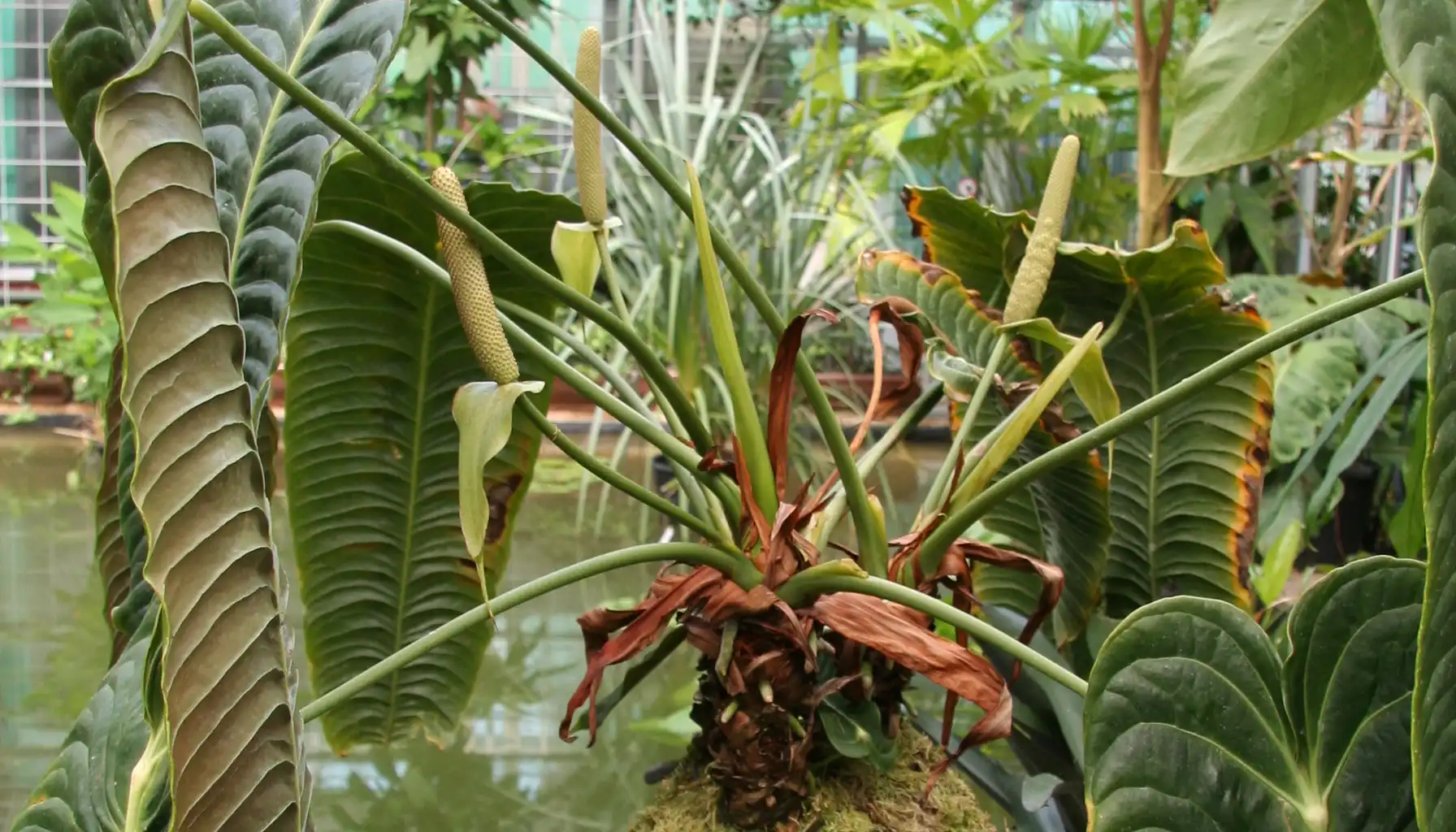Anthuriums with crystal veins, which mostly come from Anthurium crystallinum and its mixed plants, have a special mix of velvet leaf surface and silver lines that go through the leaf.
But due to the fact that there are too many plants from this family and it becomes difficult to choose the right care, many turn to the plant identification app to find the right recommendations.
Type | Main Feature |
Crystal Hope Anthurium | Wide, lobed leaf; very thick, standing-out veins |
Red Crystal Anthurium | New leaf is bright red, pink, or copper |
Chocolate Crystal Anthurium | Old leaf becomes a rich brown/dark-olive color |
Dark Crystal Anthurium | The leaf color is the darkest black, like graphite |
Crystal Mag Anthurium | Big size, thick, square stems |
Crystal Silver Anthurium | The brightest, metal-like, silver lines |
Anthurium Crystal Hope
Leaf Shape: The leaves are wider and often have a lobed shape, which looks like a heart, and the old leaves can be clearly wider than they are long
Venation: The veins are very thick, and they stick out and are bright white or silver, so they make a strong contrast against the light green, dull, or slightly grey velvet leaf surface
Texture: The leaf might be a bit thinner than the leaves of large mixed plants, such as A. magnificum x A. crystallinum
Care
To help it grow best, it needs stable, high humidity at least 65%, bright but not direct light, and a loose soil mix that lets air pass through easily, while a good mix of minerals helps to keep the leaves bright and healthy.
Anthurium Red Crystal and Tezula
Anthurium Red Crystal
It is a common trade name that people use for A. crystallinum or mixed plants that always make new leaves colored in shades of red, copper-pink, or dark red.
Red Phase: The young leaves, which have just opened, are a strong red or sometimes almost black color, which happens because of the large amount of anthocyanins.
Maturing: As the leaf gets older, the red color slowly goes away, and the leaf changes to a deep dark green or almost black color.
Anthurium Tezula Red Crystal
The Tezula Red Crystal Anthurium usually looks different from the common "Red Crystal" because of these things:
Size: It grows much bigger, because it gets its large size and strength from A. magnificum.
Stem Texture: It often has clear square or ribbed stems, which is common for A. magnificum or its close relatives.
Color Strength: The red color when the leaf is new is often deeper and stronger, almost cherry or crimson, and the velvet surface of the leaf itself can feel thicker.
You need to pay close attention to the light, because bright but not direct light is needed not only to keep the plant small and strong but also to make the red colors work their best.
Anthurium Chocolate, Dark, and Black Crystal
Anthurium Chocolate Crystal
Color: Its color often has a clear brown or dark red tone, which reminds you of dark bitter chocolate.
Contrast: The leaf looks almost glowing or neon.
Light Effect: The stronger brown or chocolate color often happens when there is more light.
Anthurium Dark Crystal and Black Crystal
Anthurium Dark Crystal: The leaf surface becomes very dark, almost graphite or black like ink, except for the shining silver lines.
Dark Crystal Anthurium: Any stress, especially not enough humidity or too much water, can make the leaf turn yellow or die and become brown, which is easy to see on such a dark background.
Anthurium Black Crystal: When the conditions are perfect and the light is right, these leaves can look almost completely black.
Purple, Mag, Queen, Sky, Silver
Anthurium Purple Crystal
Purple Shine: The leaf surface has a light purple or blue shine when the light hits it in a certain way, and this effect is most clear on young or just-grown leaves.
Purple Stem/Underside: The stems and the bottom of the leaf have a clear purple or dark red color.
Anthurium Crystal Mag and Crystal Queen
Crystal Mag: From A. magnificum it gets its big size, very thick and strong, square stems, and often a thicker, stronger leaf surface.
Anthurium Crystal Queen: It has the pointy leaves with bright crystal lines, and they show royal elegance and often have a more long and graceful shape.
Anthurium Crystal Sky and Crystal Silver
Anthurium Crystal Sky: A lighter green leaf surface, which makes the crystal lines look especially bright, and it can be a type where the young leaves come out in a very light lime-green or even yellow color before they get old.
Anthurium Crystal Silver: Some of these types don’t just have white lines but truly have a metal-like, shining effect on the veins.
General Tips for Taking Care of Crystal Anthuriums
Light: Bright and Not Direct
The most important thing for the color and the thickness of the velvet is bright, but not direct light.
Best Light: An east-facing window, or a few meters away from a south/west window, where the sun does not shine straight onto the leaves, is the best.
Problem: If there is not enough light, the stems will stretch out, the leaves will be thinner and light green, and the dark or red color of the right types will not be strong.
Not sure if you're doing everything right? Scan any plant through the AI Plant Finder and get personalized advice.
Humidity: Very Important
Velvet anthuriums come from the lower part of tropical forests, where the air is always very wet.
Ideal Level: 65% – 80% is perfect
Bad Effects of Not Enough: Low humidity less than 50% is the main reason for dry tips and brown cracked edges of the leaves, and it also makes the plant grow slower.
Solution: Use a humidifier, put the plant in a terrarium, or use a tray with wet clay balls under the pot.
Soil and Watering: Air is the Most Important
The roots of anthuriums need very good drainage and air, because they do not like wet soil that stays wet for a long time.
Soil pH by Mix: You should use a very loose mix with big pieces like large pine bark, perlite, coconut chips, zeolite, or lechuza-pon, and you must not use heavy soil that is mostly peat moss.
Watering: Water a lot, letting the water run out completely, but only water when the top half of the soil or about 70% of the pot is dry, and it is better to water a little less than to water too much.
Temperature and Food
Temperature: The perfect temperature that protects the plant from freezing is to 25∘C, and they don’t like cold air movements or sudden big changes in temperature.
Food: During the spring-summer, use a balanced plant food that does not have too much nitrogen, for example, NPK 1-1-1 or 3-1-2 at half the normal amount every second or third time you water, and giving them calcium and magnesium regularly is very important for growing healthy, strong leaves and stopping new leaves from looking strange.
Related AI Plant Finder Posts
